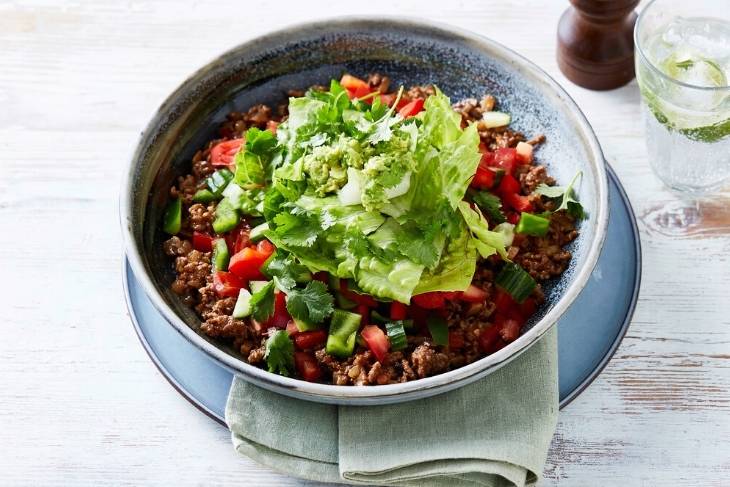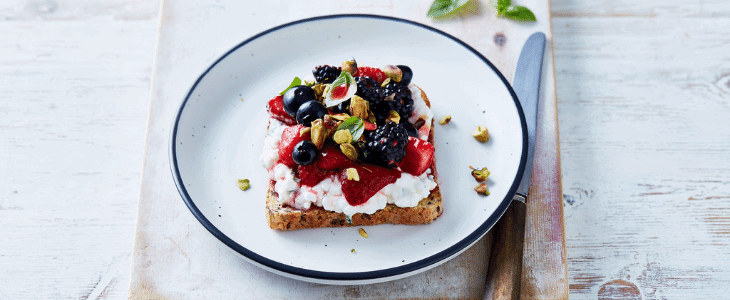How to eat well for less

You’ll hear people say that eating healthily is expensive. But is this actually true?
If you're comparing organic vegetables to snack-size chocolates you're going to see a huge discrepancy in price, but plenty of healthy foods are inexpensive, such as eggs, fruit, whole grains, vegetables and dried beans.
Here are our 9 top tips that can help you eat healthily on a budget.
1. Shop for seasonally available food
Eating fruits and vegetables when they’re in season gives you the benefit of their full flavour, freshness and nutritional value. You will also drastically reduce your weekly spending as in-season produce is much cheaper.
Not sure what foods are in season and when? Read our blog on how to buy the best fresh produce.
2. Use cheaper cuts of meat
Meat can be expensive so look at getting cheaper cuts such as chuck steaks for stews. Frozen fish and salmon are generally cheaper than fresh seafood, and it can sometimes be cheaper to buy a whole chicken rather than chicken fillets.
3. Bulk up your meals with plant-based protein
Use eggs, lentils, or tofu in place of some meat portions at dinner to help cut your grocery bill. Our protein balance philosophy recommends eating at least 25 g at each meal and around 100 g of protein each day.
For advice on the best vegetarian protein options, click here.
4. Batch cook your meals and use leftovers
Batch cooking meals, or making more portions than you need, not only takes the pressure off you later in the week as you can simply reheat a dinner or lunch, but you can also freeze any leftover meals for a later date. Future you will be very grateful.
5. Reduce food waste
Check what food you already have in the pantry, fridge, and freezer, plan out your meals for the week, and then make a shopping list based on this. Once you’re in the supermarket, promise yourself that you’ll stick only to your list, which will prevent you from adding unnecessary extras.
6. Try supermarket own brands
Next time you’re replacing pantry staples like beans, tomato sauce, yoghurt, tinned goods, and canned fish, try looking for the supermarket's own brand. These often sell for a fraction of the price of the market leader and taste just as delicious.
7. Buy frozen fruit and vegetables
If you find yourself throwing out fruit and vegetables because you haven’t got to them in time, consider whether frozen versions might be a more cost-effective option for you.
Most frozen fruit and veggies are snap frozen, which seals in the nutrients and makes them just as healthy as their fresh counterparts. You’ll also save on price. A box of 250 g frozen chopped spinach, for example, is $1.00 vs $5.00 for 280 g of pre-packed spinach leaves. If you are stocking up on fruits or veggies, be sure to use them as supplements to your regular meals. If you are buying them for detox, remember scientific studies do not support the efficacy of detox diets.
If you want to stick to fresh foods, learn what will stay fresh and nutritious in the fridge or cupboard, and for how long.
8. Ditch the café breakfasts
You can easily prepare avocado on toast or an omelette at home for a fraction of the price of what you would pay at a café. Buying a loaf of bread, a couple of avocados and a carton of eggs will make you a week’s worth of breakfasts, rather than a costly one-off meal.
9. Avoid jumping on superfood fads
The popularity of what’s considered a superfood can really bump up costs. Try to avoid jumping on the hype and instead focus on minimally processed whole foods, such as almonds over activated almonds.

The CSIRO Total Wellbeing Diet
We know healthy eating on a budget can be hard, which is why we created a Protein Balance Basic meal plan for members.
This 12-week meal plan follows the much-loved higher protein, low Gi philosophy of our other plans, but offers budget-friendly options and utilises everyday ingredients, with recipes costing as little as $5 a meal.
It is scientifically designed for weight loss and while there is some prep work required at the start of each week, the benefit is tasty, healthy meals and a happier, healthier body.
Learn more about our meal plans.
Cheapest healthy meals
Here are some of our delicious and healthy CSIRO Total Wellbeing Diet recipes for weight loss on a budget!
• Thai-style beef and bean stir-fry
For more delicious CSIRO Total Wellbeing Diet recipes, click here
